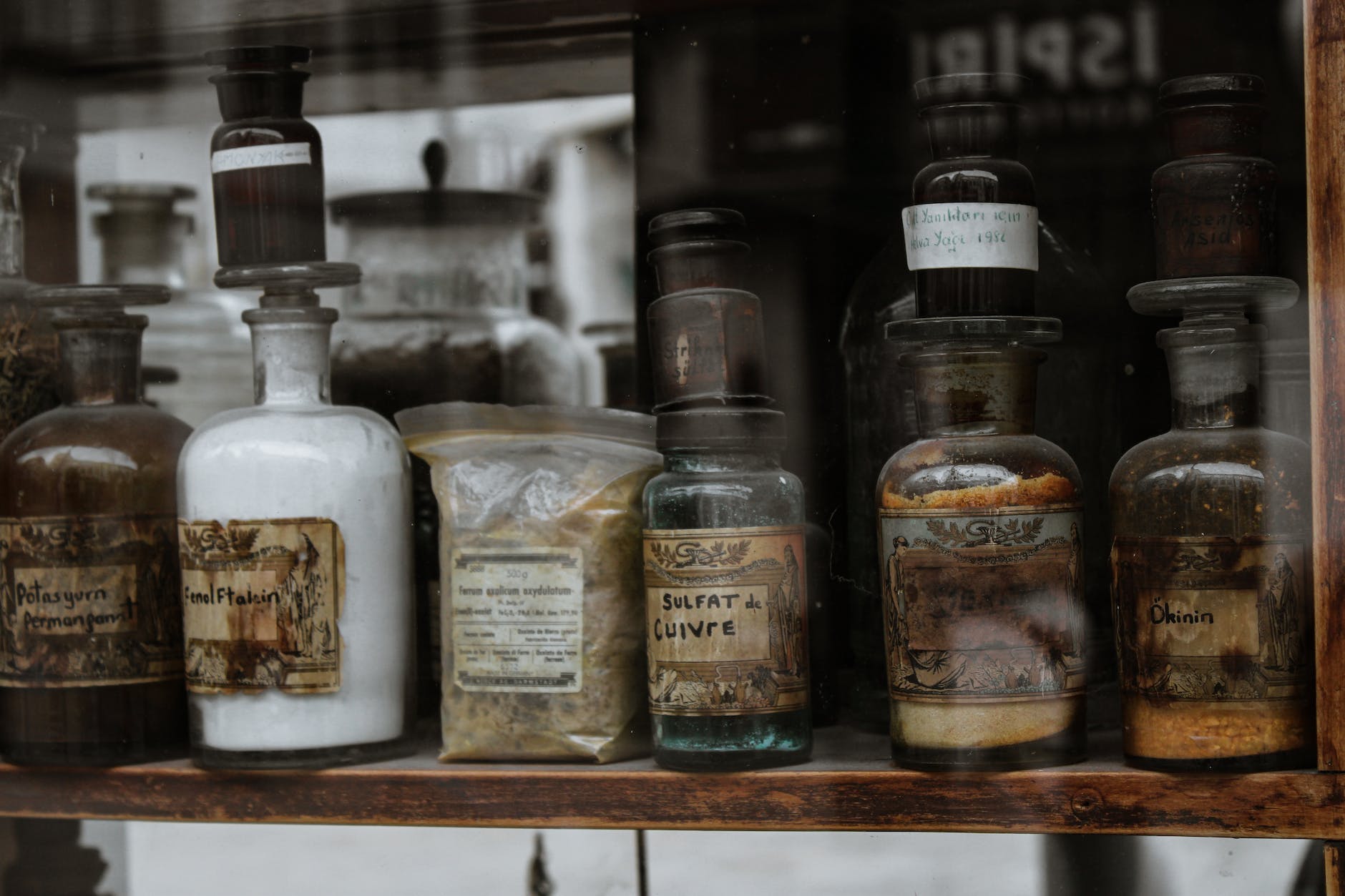
Ever wondered how people in medieval times dealt with illnesses? From snail poultices to owl salts, medieval remedies were as strange as they were varied. Without modern medical knowledge, people relied on a mix of superstition, herbal concoctions, and downright bizarre practices to treat ailments. Imagine using a puppy stuffed with snails and sage to make an ointment for gout or applying a mixture of hare’s gall bladder and honey to cure cataracts. These remedies, while often ineffective or dangerous, offer a fascinating glimpse into the past. Let's dive into 35 bizarre medieval remedies that highlight the creativity and desperation of those times.
Key Takeaways:
- Medieval remedies were truly bizarre, from snail poultices to owl salts. These strange treatments involved roasting puppies stuffed with snails and using powdered owls for gout ointments.
- Superstitions and astrology played a big role in medieval medicine, with remedies like tying live crabs around the neck to treat swollen eyes and using astrology to determine when to administer treatments.
Snail Poultices and Owl Salts
Medieval remedies often involved strange ingredients and even stranger methods. Let's dive into some of the most bizarre treatments from the Middle Ages.
-
Snail Poultices: One remedy involved stuffing a puppy with snails and sage, then roasting it over a fire. The rendered fat was used to make an ointment for gout sufferers. This method was believed to transfer the healing properties of snails and sage to the patient.
-
Owl Salts: Another treatment suggested salting an owl and baking it until it could be ground into a powder. This powder was then mixed with boar’s grease to create an ointment for gout. The combination of owl and boar was thought to have potent healing effects.
Eye Treatments and Leechbooks
Eye ailments were common, and medieval practitioners had their own unique ways of addressing them. Leechbooks, the medical texts of the time, were filled with such remedies.
-
Hare’s Gall Bladder: For cataracts, a recipe suggested mixing a hare’s gall bladder with honey and applying it to the eye with a feather. This treatment was to be repeated over three nights, hoping the mixture would clear the cataract.
-
Leechbooks: Medieval medical books, known as leechbooks, contained various recipes for treatments. Despite their name, they did not always involve leeches. Bald's Leechbook is one of the most famous, containing recipes for antimicrobial salves.
-
Crop-Leek and Garlic: A remedy from Bald's Leechbook involved mixing equal amounts of crop-leek and garlic, then adding wine and bull’s gall. The mixture was left to stand for nine nights in a brass vessel before being applied to the eye with a feather. Surprisingly, this remedy has been proven to kill the antibiotic-resistant superbug MRSA.
Superstitions and Pregnancy Care
Medieval medicine was deeply intertwined with superstition and beliefs about protection from evil forces. Pregnancy care also had its unique set of guidelines.
-
Swollen Eyes: To treat swollen eyes, medieval practitioners suggested tying a live crab around the neck. This was believed to draw out the swelling.
-
Superstition and Protection: People believed that placing a water plant under the pillow at night could protect the patient from the devil. Such practices were common to ward off evil spirits.
-
Pregnancy Care: During pregnancy, Anglo-Saxon leechbooks advised avoiding salty food, alcohol, and vigorous exercise. These guidelines were meant to ensure a healthy pregnancy and safe delivery.
Infections and Advanced Wound Treatments
Medieval remedies for infections and wounds were a mix of surprisingly advanced techniques and dangerous practices.
-
Infections: Many leechbook medicines to treat swollen infected parts of the body included copper salts, which are bactericidal but could also cause harm. Despite the risks, these treatments were somewhat effective against infections.
-
Belly Wound Treatment: If a person was wounded in the belly and their bowels were poking out, the physician should replace the bowels and sew the wound up with silk. This practice was surprisingly advanced for its time and showed a rudimentary understanding of surgery.
Remedies for Night Blindness and Medicinal Cannibalism
Some medieval treatments were based on nutritional knowledge, while others ventured into the macabre.
-
Night Blindness: To cure night blindness, medieval practitioners suggested anointing the eyes with buck liver and giving the liver itself to be eaten. Buck liver is rich in Vitamin A, which can cure night blindness caused by Vitamin A deficiency.
-
Dung in the Eye: Another bizarre remedy for night blindness involved applying dung to the eyes. This was not a recommended practice and likely caused more harm than good.
-
Medicinal Cannibalism: In medieval times, cannibalism was sometimes used as a medical treatment. Human blood was prescribed for conditions like epilepsy, migraines, and eye problems. Oil made from boiled human bones was also used to treat gout and epilepsy.
Trepanation and Egyptian Mummies
Medieval medicine sometimes involved invasive procedures and the use of human remains.
-
Trepanation: Trepanation, drilling holes into the skull, was a common procedure for treating headaches, epilepsy, mental illness, and head wounds. Patients were often awake during the procedure with no anesthesia or pain relief.
-
Egyptian Mummies: For the rich, Egyptian mummies were a source of medicinal human flesh. However, many preferred the cheaper option of attending an execution and collecting fresh blood before the victim was dead.
-
Human Elixirs: Many monarchs, including Charles II and Queen Mary, relied on cannibalistic elixirs to cure their illnesses. This practice was widespread among the nobility.
Herbal Remedies and Astrology in Medicine
Herbal remedies were a staple of medieval medicine, and astrology played a significant role in medical practices.
-
Herbal Remedies: Plants like sage, rosemary, thyme, and mint were commonly used, along with spices like cumin, pepper, and ginger. These herbs were believed to have various healing properties.
-
Astrology in Medicine: Medieval doctors believed that the position of the planets could influence medical treatments. Astrology was used to determine when to administer treatments and diagnose diseases.
-
Bloodletting: Bloodletting was a common practice based on the belief that the moon could influence bodily fluids. The position of the planets was also thought to guide this practice.
Local Healers and Monastic Medicine
Most medieval people did not have access to professional doctors. Instead, they relied on local healers and monastic care.
-
Local Wise Women: Most people did not see a doctor in medieval times. Instead, they visited local wise women who used herbs to help them recover.
-
Priests and Barbers: Priests and barbers also played roles in medieval healthcare. They performed tasks like setting broken bones and extracting teeth.
-
Monasteries and Hospitals: Monks and nuns ran hospitals in their monasteries. These institutions provided care for the sick and dying, often using herbal remedies and other treatments.
-
Herbal Gardens: Many monasteries developed plant gardens where medicinal plants were grown and experimented with. Monks were skilled in making books and manuscripts, which included herbal remedies.
Ancient Texts and Diagnostic Methods
Medieval medicine drew heavily from ancient texts and had its own unique diagnostic methods.
-
Ancient Texts: The works of ancient writers like Pliny and Dioscorides were copied in medieval times. These texts included information on myths, folklore, trees, and medicinal plants.
-
Diagnostics: Medieval doctors diagnosed diseases by examining urine, feeling the pulse, and looking at the patient. The color of urine and pulsing veins were seen as important indicators of disease.
More Bizarre Remedies
The creativity of medieval medicine knew no bounds, leading to some truly strange remedies.
-
Radish and Garlic Ointment: A recipe for an ointment to cure headaches and joint pains involved using radish, garlic, bishop wort, helenium, wormwood, crop leek, and hollow leek. The mixture was fried in butter with celandine and red nettle before being strained and applied to the forehead or affected area.
-
Bull’s Gall and Onion: Another remedy for a stye on the eye involved pounding equal amounts of onion and garlic together. Wine and bull’s gall were then mixed with the onion and garlic before being left to stand for nine nights in a brass bowl. The mixture was strained and applied to the eye with a feather.
-
Betony for Headaches: For migraines, a remedy suggested boiling barley with betony, vervain, and other herbs. The mixture was then wrapped in a cloth and applied to the sick head.
-
Copper Salves: Many leechbook medicines included copper salts, which were bactericidal but could also cause harm. Despite this, these salves were effective against infections.
-
Silk Sutures: A recommendation for treating belly wounds involved replacing the bowels and sewing the wound up with silk. This practice was advanced for its time and allowed the silk to dissolve like modern stitches.
-
Iron-Rich Liquid: A remedy for an enlarged spleen involved drinking liquid that had been cooled in a hot iron rod. This liquid was rich in iron and could help with anaemia.
-
Liver Treatment: To cure night blindness, buck liver was roasted and the liquid from it was anointed on the eyes. The liver itself was also eaten to provide Vitamin A.
-
Garland of Herbs: People used fragrant woods and plants to make garlands that were hung in their houses to improve health. Each type of herb, tree, and flower was believed to have unique qualities.
-
Rosewater and Rose Petals: Rosewater was brought back from the Middle East by Crusaders and used to scent bath water. Rose petals were also used to make people feel better. The rose was most often associated with the Middle Ages.
-
Human Elixirs: Many monarchs, including Charles II and Queen Mary, relied on cannibalistic elixirs to cure their illnesses. This practice was widespread among the nobility.
Medieval Medicine: A Strange and Fascinating World
Medieval remedies were a mix of superstition, limited knowledge, and some surprisingly effective treatments. From snail poultices to owl salts, these bizarre methods highlight the era's unique approach to health. Leechbooks like Bald's Leechbook offered recipes that sometimes worked, like the crop-leek and garlic mixture for infections. Yet, other practices, such as trepanation and medicinal cannibalism, were downright dangerous. Despite the oddities, medieval practitioners aimed to help their patients with the tools they had. Herbal remedies, astrology in medicine, and the role of local wise women show a blend of tradition and trial-and-error. The study of these ancient practices offers a glimpse into the history of medicine, reminding us how far we've come. While some remedies were effective, others were risky, reflecting the era's limited understanding of human health.
Frequently Asked Questions
Was this page helpful?
Our commitment to delivering trustworthy and engaging content is at the heart of what we do. Each fact on our site is contributed by real users like you, bringing a wealth of diverse insights and information. To ensure the highest standards of accuracy and reliability, our dedicated editors meticulously review each submission. This process guarantees that the facts we share are not only fascinating but also credible. Trust in our commitment to quality and authenticity as you explore and learn with us.


